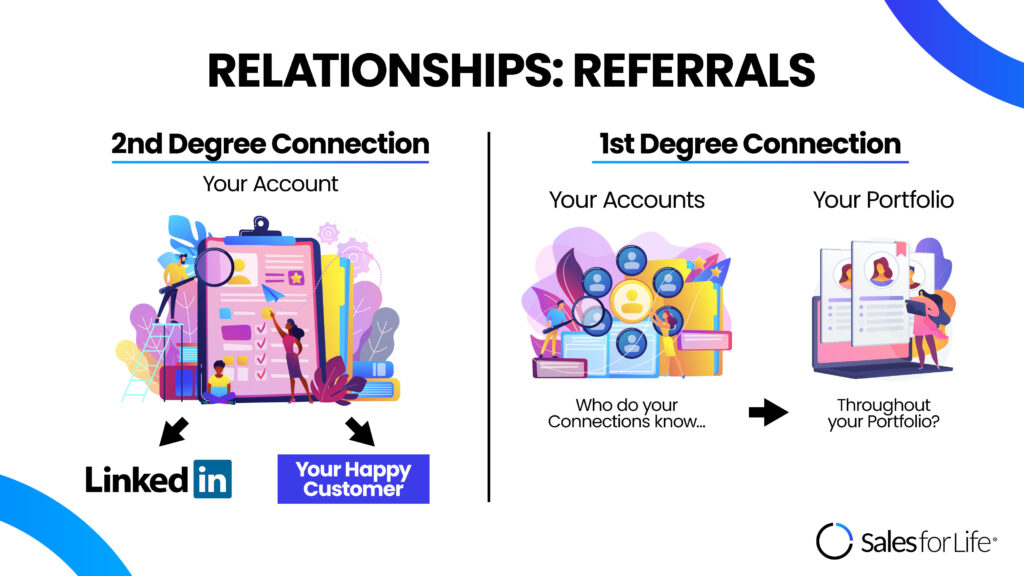Pop quiz: What’s the sales tactic with the highest ROI?
It’s neither email campaigns nor PPC ads. It’s not social media marketing, and it’s definitely not cold calls.
The correct answer is asking for referrals.
Referrals work because people are more likely to purchase products that are endorsed by people whom they actually know and trust. According to a Harvard Business Review article, “ 84% of B2B buyers are now starting the purchasing process with a referral, and peer recommendations are influencing more than 90% of all B2B buying decisions.”
Those are impressive numbers, especially when you take into consideration the declining success rates of cold calling and email marketing. What’s even better is that asking for referrals doesn’t entail spending money.
Why Do People Trust Referrals?
Sales referrals leverage the goodwill between the referred customer and the person making the referral. A referred prospect will be quicker to trust you and your product because they trust the person who referred them to you. And since they are more confident that you can deliver, they will move through the purchasing process faster than cold opportunities.
In fact, according to a 2015 Heinz Marketing survey of over 600 B2B sales and marketing leaders, 69 percent of respondents said that referral leads close faster than non-referral leads, while 71 percent of respondents said that referrals have a higher closing rate compared to leads from other sources.
This probably has to do with buyers’ wariness of traditional sales tactics, which could come off as pushy and self-serving. The shift to social selling—using social media platforms to research leads, prospect, and provide insightful content—allowed sellers to build relationships in a less hard-sell manner, proving their value until customers are ready to purchase.
So why doesn’t it seem like salespeople are using referrals to their advantage?
Perhaps they just don’t know how to ask for referrals properly.
Building Your Sales Referral Strategy

1. Time it right
“Referrals need to be a process as much as prospecting is a process,” says Amar Sheth, Sales for Life’s COO. “It should be done when a customer has crossed a certain lifetime value with you—for instance, customers that have been using your solution for 6 months or 3 months, or whatever term you think is appropriate.”
It’s important that sellers first demonstrate their value before asking a customer for a referral; otherwise, they could come off as self-serving. But at the same time, don’t wait to pounce until it’s too late and the excitement over your product has run out. You need to strike when your happy customers are still buzzing about your product and how great it is.
2. Be precise
As much as possible, don’t leave it up to the customer to decide whom they’ll introduce you to.
“Traditionally, B2B salespeople, when they ask for referrals, they’re asking the customer to determine who they should be introduced to,” says Sheth. “That’s actually very dangerous, and it’s not a smart thing because the customer has to now think about it, which means that there’s a high likelihood that this request may not even be fulfilled.”
Use social tools like LinkedIn to check their sphere of influence to see who they’re connected to. This lets you ask for strategic and surgical referrals, allowing you to enter and penetrate accounts of your choice instead of being at your customer’s mercy.
3. Use referral templates
Having templated emails ready allows you to ask for referrals quickly in a polite and professional manner.
Here’s an email template you can use for your customer advocates:
Dear [name of advocate], I hope you're doing well! I’m so glad to hear that our [work/service/product] has been working so well for you and your team. I knew that by working together, we’d be able to drive significant impact for [their company]. You’ve been a great advocate for [your company], and I would greatly appreciate if you could recommend us to any/all of the following people: 1. Jamie Shanks from Sales for Life 2. [Name of person you’d like to be introduced to] from [company] 3. [Name of person you’d like to be introduced to] from [company] I’d love to help them achieve the same results you’ve gotten. Thank you so much in advance! Best, [your name]
Asking for referrals is one of the simplest ways to generate new business. But while referrals have a higher success rate, don’t expect immediate results—these things can take time as your referred prospects might not need your product or service at the moment. Qualify these opportunities carefully.
In the meantime, keep building value, and have your account executives check in with your advocates and prospects to see how they’re doing. And don’t hesitate to ask your advocates if they know anyone who could benefit from your services—you’ll never know unless you ask!




